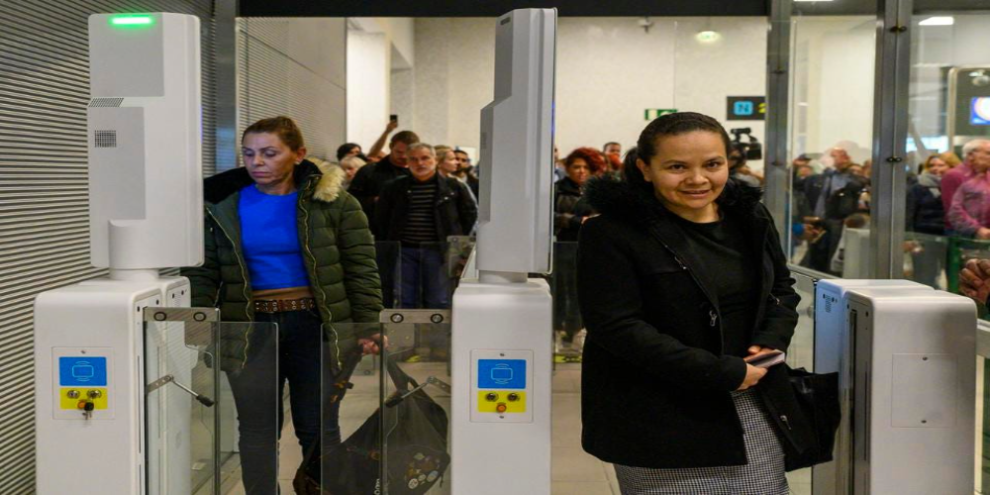The plan for European countries to start using new biometric border control systems for U.S. and other travelers has been delayed again, and won’t come into effect until at least May, 2024—but this date might be pushed further back until after the Olympic Games have finished in Paris in August 2024.
The New Entry and Exit System is Delayed Until 2024
The EES, as it is known, is a new way of controlling the borders that circle all 27 EU countries and those in the Schengen area (which is wider than just EU countries and allows the free flow of travelers across participating countries, such as Iceland, Norway and Switzerland).
The new EES does not change the documentation needed to visit European countries but it does change how it happens—notably through the use of biometric data such as fingerprint and facial scanning via electronic gates upon arrival into one of these countries.
It was due to come into effect in November 2023 but has been delayed—as reported by the U.K.’s Independent—because the database that the EES needs to operate is unlikely to be ready in time.
A formal announcement is due to be given, with exact dates, in June. November was chosen in 2023 as it is traditionally a low point for travel in and out of Europe, so it seems likely that any delay would be pushed to another lull in the travel calendar and after the point when French organizers would expect 10 million additional travelers for the Olympic Games.
One of the reasons to tighten the border controls, beyond the current traditional passport checks and stamps for non-EU nationals, is to find a better way to control the 90-day limit for stays in the EU for non-visa holders.
At the moment, the current system makes it difficult to track people who overstay, whereas electronic dates will automatically log the time and date of entry into the European area and will therefore know better when travelers’ time is up and they must leave or be fined. Whilst airports are currently using biometric scanners to check passports, they simply scan the photos and validity of the passport.
The system will apply to over 50 countries who don’t need visas to travel for holidays, including the U.S. and the U.K. It does not impact country-to-country travel throughout Europe nor will it impact foreign nationals who have visas or permanent permission to stay in the EU.
Many EU countries have expressed a fear that the new system will take longer to process visitors and have asked for lots of checking before the system becomes live.
The New ETIAS Scheme is Also Now Scheduled for 2024
There is an additional travel scheme starting that will impact many visitors to Europe in a different way, regarding the documentation required for entry into an EU or Schengen-area country.
In the same way as the U.S. operates its ESTA scheme for (mostly) non-U.S. nationals, it will be necessary to register before arrival for authorisation to stay under 90 days (above, and people need a visa). The authorization will be valid for 3 years and will cost €7 (but free to children and the over-70s).
Travelers from 63 countries will need to apply for an ETIAS form before arriving in a Schengen area country, including those from Argentina, Australia, Brazil, Canada, Japan, New Zealand, the U.S., the U.K. and the UAE.
The ETIAS has been pushed back to an unspecified date, as yet, in 2024.
Source : Forbes















